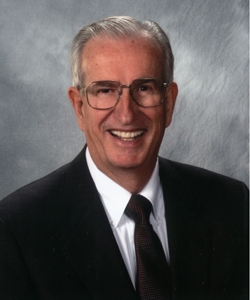William Menzies’ Lectures on Non-Wesleyan Pentecostalism, reviewed by Paul King
 William W. Menzies, “Non-Wesleyan Pentecostalism: A Tradition: ‘The Finished Work,’” Asian Journal of Pentecostal Studies 14:2 (July 2011), pages 187-198.
William W. Menzies, “Non-Wesleyan Pentecostalism: A Tradition: ‘The Finished Work,’” Asian Journal of Pentecostal Studies 14:2 (July 2011), pages 187-198.
William W. Menzies, “Non-Wesleyan Pentecostalism: A Tradition: The Influence of Fundamentalism,” Asian Journal of Pentecostal Studies 14:2 (July 2011), pages 199-211.
William W. Menzies, “Non-Wesleyan Pentecostalism: A Tradition: Keswick and the Higher Life,” Asian Journal of Pentecostal Studies 14:2 (July 2011), pages 213-225.
In his lectures on Non-Wesleyan Pentecostalism, presented at the Asia Pacific Theological Seminary, William W. Menzies ably surveys the impact of non-Wesleyan traditions upon Pentecostalism, and especially the Assemblies of God. These include Finished Work, Fundamentalism, Keswick, and The Christian and Missionary Alliance (C&MA). A review of Menzies’ lecture on the A.B. Simpson and the C&MA appeared in an earlier article.
In his first lecture, “Non-Wesleyan Pentecostalism: A Tradition: Finished Work,” after a brief biography of William Durham, the prime proponent of Finished Work Pentecostalism, Menzies describes Durham’s departure from the Wesleyan eradication view of sanctification. Early Pentecostal belief, as reflected in Charles Parham and William Seymour, taught that a person needs to be sanctified by a second crisis experience before one can receive the baptism in the Spirit and tongues. Durham viewed sanctification as the believer’s position in the finished work of Christ, with no need for a second blessing crisis of sanctification to root out sin. Thus, one did not need to become sanctified before receiving the baptism in the Spirit and speaking in tongues. This created an acrimonious division in the Pentecostal movement. As a result, William Seymour, catalyst of the Azusa Street Revival of 1906, locked Durham out of his church in 1911. However, the influence of the finished work teaching became so pervasive that Menzies notes that “virtually all Pentecostal bodies that had origins after 1911 adopted non-Wesleyan sanctification views” (p. 218).
Two significant omissions to this issue include the prophecies of both Seymour and Parham regarding Durham. When Seymour locked Durham out of his church, he prophesied that Durham would die if he turned aside from the will of God.[1] Likewise, in January 1912 Charles Parham claimed that Durham had committed the sin unto death and prophesied Durham’s death within six months, praying, “If this man’s doctrine is true, let my life go out to prove it, but if our teaching on a definite grace of sanctification is true, let his life pay the forfeit.”[2] Durham, in fact, did die in July 1912, and thus in the eyes of some Wesleyan Pentecostals a fulfillment of their prophecies, but his teachings had already gained traction and the prophetic fulfillment was ignored or dismissed.
Menzies then presents the impact of Fundamentalism on the Pentecostal movement in his lecture “Non-Wesleyan Pentecostalism: A Tradition: Fundamentalism.” The fundamental doctrines of the faith were at the very foundation of Pentecostalism. These included belief in the Trinity, the deity and humanity of Christ, salvation by faith, the person of the Holy Spirit, the inerrancy of Scripture, and dispensational teaching on the literal second coming of Christ. Menzies notes, however, that fundamentalism did not respond in kind to Pentecostalism. By 1928, fundamentalism had formally adopted cessationist dispensationalism, by rejecting tongues, prophetic revelation, and healing.
Menzies’ next article discusses the “Non-Wesleyan Pentecostalism: A Tradition: Keswick/Higher Life.” He is correct in noting the significant influence of Keswick/Higher Life holiness teaching. He holds Steven Barabas and his teaching as representative of Keswick. However, this is not fully accurate. It would be more accurate to say that Barabas’ teaching was the predominant developing expression of sanctification. Barabas wrote a history and theology of Keswick in the 1940s, but he was more representative of later Keswick than turn-of-the-century Keswick. Menzies appears to take most of his information from Barabas rather than from original sources and more recent research. Menzies states, “Keswick leaders often say that God’s method of sanctification is not suppression, but counteraction.” (p. 221). Although this is somewhat true, it is not totally accurate. Actually, earlier Keswick leaders did use the language of suppression, but as time went on, and in response to criticisms, the language of counteraction was used. A.B. Simpson, for instance, spoke at the Keswick convention of 1890, especially opposing the language of suppression. His cautions apparently were heeded, and by a few years later, the language had changed from suppression to counteraction.
Category: Church History, Pneuma Review, Spring 2014


